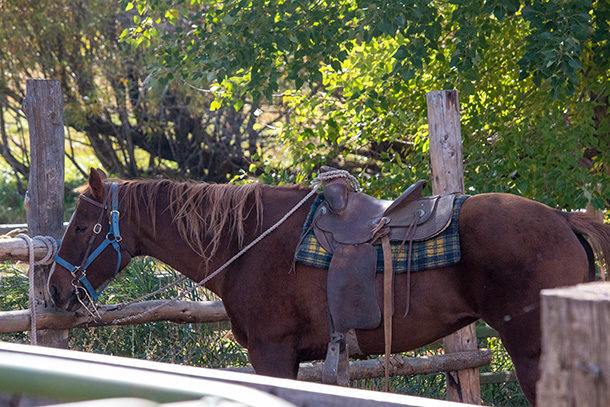No rain, no problem for mosquitoes
“Just because we don’t have rain, doesn’t mean we don’t have mosquitoes,” explains Justin Talley, former livestock entomologist and department head of entomology and plant pathology at Oklahoma State University. “Some of the most significant West Nile virus [WNV] outbreak years have been associated without significant rainfall. Be aware, just because you don’t see water doesn’t mean there are no breeding areas around.”
Talley shared how the culex mosquito, which is responsible for transmitting core equine diseases such as WNV, can populate in the most unsuspecting places. Standing, puddling water is not needed. “One would think that wet years equal more equine West Nile virus cases; however, the type of mosquitoes transmitting these equine diseases can develop in muddy water or a storm drain. There’s a lot of water you don’t see.”
Even a tiny hole in a tree – with just a bit of water – is enough for the culex mosquito to repopulate within. “The thing about mosquitoes is they’re very diverse in the habitat they can modify to, and it’s their adaptive behaviors that allow them to be successful,” Talley said.
As risk remains for mosquito-transmitted equine diseases, even in areas impacted by drought, is your horse protected? “Once our nighttime temps are above 50 degrees [Fahrenheit], or daytime is above 80 degrees, that’s the likelihood of when mosquitoes will develop,” Talley said.
3 of 5 core equine diseases spread by mosquitoes
Horses are threatened with mortality rates up to 90% from mosquito-transmitted diseases.
“The three big equine diseases transmitted by mosquitoes are West Nile virus, eastern equine encephalomyelitis [EEE] and western equine encephalomyelitis [WEE]. Venezuelan equine encephalomyelitis [VEE] isn’t typically a problem, but there have been years with outbreaks in specific areas,” warns Tony Hawkins, Valley Vet Supply technical service veterinarian.
These diseases can attack and inflame a horse’s nervous system. EEE, WEE and VEE are spread to horses by mosquitoes, which feed on infected birds and rodents that serve as virus reservoirs. WNV is transmitted by mosquitoes, which feed on infected birds.
4 tips to protect your horse
1: Vaccinate horses. Horses all across the country are at risk for WNV. It’s important to vaccinate horses before, or at least early in, the mosquito season. Vaccines provide horses with long-lasting immunity. “When horses receive their two initial doses, then after that they have a yearly booster, we will have a good response seven days post vaccination,” said Dr. Hawkins.
2: Hang livestock fans. “We know that putting fans on horses will prevent some of the mosquitoes from feeding on them – it’s a good, natural thing to utilize. If it’s a slow-moving fan, like a box fan in your barn by your stall, it won’t do much. But a high-powered fan, that’s going to help keep away the mosquitoes,” said Dr. Talley.
3: Eliminate standing water. Dr. Hawkins encourages horse owners to eliminate as much standing water as possible and empty and clean their horse’s water sources at least weekly.
4: Minimize horses’ exposure. Keep horses inside the barn under fans during prime mosquito feeding times, which include dusk and dawn, encourages Dr. Hawkins.
Take steps to keep your horses safe and comfortable as mosquitoes make their presence known.
Continue learning about horse health at ValleyVet.com.











